Latinx Files: The Edward James Olmos Interview
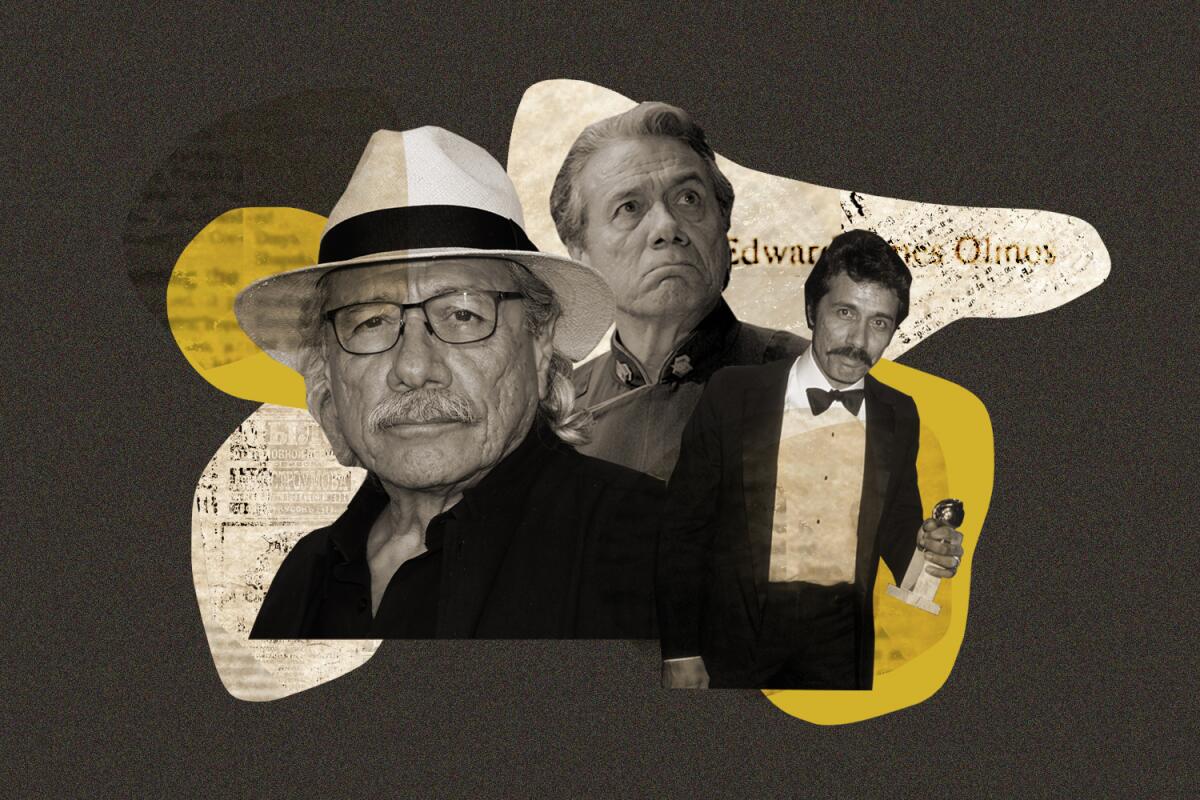
Edward James Olmos is cinematic royalty.
Olmos, a native of East Los Angeles, has a career that spans six decades and has arguably been the most visible Latinx actor in that period thanks to movies and shows like “Selena,” “Miami Vice,” “Stand and Deliver,” “American Me,” “Zoot Suit,” and “Battlestar Galactica,” just to name a few.
I had a chance to speak with Olmos ahead of the start of the Los Angeles Latino International Film Festival, which he co-founded in 1997 and whose 2022 iteration kicked off yesterday with a screening of the documentary “Mija.”
This interview has been lightly edited for clarity.
Mr. Olmos, thank you for taking the time. It really does feel like a privilege speaking with you, but in a way it’s kind of bad, right? Your career is legendary. You’re someone whose films are basically in the Mount Rushmore of Chicanx and Latinx cinema, which is a testament to the quality of your work, but it also feels like an indictment on the lack of Latinx representation in Hollywood …
Yes. That’s the biggest testament to that, I would say. Over the last 30 years, the majority of American films on Latin themes, I’ve either acted in them, or directed them, or helped write them, or helped produce them, or helped distribute them, or helped in a multitude of different ways. It’s been amazing that we’ve helped so many people, but we’re still way, way, way behind the curve on the amount of images that you see of Latinos on the screen — or on television or the theater — given how many of us there are.
I’m a millennial and most of my friends are as well. A lot of us have the shared experience of being in school and having a substitute teacher play “Stand and Deliver” whenever the actual teacher was out sick. It feels very much a part of the broader Latinx consciousness. Can you talk to me about how important this film is to you?
I was so grateful that I was prepared to be able to handle the responsibility because it was so important. No one even came close to what Jaime [Escalante] was doing at that time in the history of the country. He was one of a kind. He was so much one of a kind that they couldn’t believe it. They couldn’t believe that these 18 students could actually do well in one of the most difficult examinations given to high school students in the United States of America. These kids did so well that it was literally unbelievable. The Educational Testing Service out of Princeton, N.J., made them retake the examination because they couldn’t believe the students didn’t cheat.
We all tried our hardest to really capture the essence of what the story was all about, and it became so profound over the last 30-something years. Since 1988, the usage of, like you were saying, “Stand and Deliver,” is unbelievable in respect to how many thousands of teachers use it every day in their classroom like it was a really good book. It’s amazing because you’re talking about millions of kids seeing it. No one can touch that.
I remember watching it and thinking it was just so revolutionary to be told in a movie that there is value and dignity in being Mexican American and that we are capable of being more than just a laborer. It was transformative.
And that movie, it’s just so quotable. Like the “All we need is ganas!” line. There are so many one-liners that just stick.
Yeah, it’s beautiful. I mean there’s “break your neck like a toothpick!” (Laughter).
Speaking of quotable lines, let’s talk about “Selena.” That’s another film that is not only part of the Chicanx film canon but also the broader Latinx canon, given the universal love that Latinxs still have for Selena. Your character, Abraham Quintanilla, has that line that speaks to the duality of being Latinx American or Mexican American. You’re caught between two cultures and yet you’re not enough for either. That sentiment is definitely something that really sticks with you.
Yeah, it really does. Mexican Americans that saw the movie laughed like crazy and cheered because it was the first time [that sentiment] was put in a situation like that, that we could see it and the whole world was listening to us and looking at it. And that, to me, is really, really important. That we’ve learned about each other and that we know about each other. That’s how you learn about other people, through the arts. To me, Selena did a great job at that.
The Latinx experience chronicled
Get the Latinx Files newsletter for stories that capture the multitudes within our communities.
You may occasionally receive promotional content from the Los Angeles Times.
Has there ever been a moment where you felt the historical neglect of Latinxs in the arts was about to change?
(Deep sigh) You know. I’ve been doing this since 1964. When I started, I didn’t know anything about that, about the lack of representation. I had images of José Ferrer playing Cyrano de Bergerac. He won an Academy Award for it. I also knew about Anthony Quinn; I learned about him in the ‘60s. But when I got involved and started to work, I started to hit different situations that would definitely indicate to me that this was not an even playing field. And as time went on, I found it to be an asset, not a detriment, to my existence and how I worked because all I had to do was to just focus on stories that I really could understand and create. They were harder to get made. They weren’t easy. But when you did, they really resonated with not only the Latino community, but with the entire country and around the world. I found it to be something that satisfied me immensely, and at the same time we were filling a void that had to be understood or else we would continue to move in a very limited way culturally. Once you start to know more about people, you think to yourself, “I’m not afraid of them anymore” because you get to know them and you can relate to them. That’s what “Selena” did. That’s what “Stand and Deliver” and “The Ballad of Gregorio Cortez” did.
The whole thing about you “gotta be more Mexican than the Mexican, more American than the American,” that’s something that people of all cultures laugh at. They find it funny and it’s a truth. Not the truth, but a truth that most bicultural people go through, whether they be Latinos or Asians. To me, “Selena” really captures the heart and soul of that. And it was so commercially successful because of the music. The whole world saw it and they loved it.
Let’s talk a little about “The Ballad of Gregorio Cortez,” a film about a Tejano man who becomes an outlaw because of the language barrier between himself and the Texas Rangers, who accused him of stealing a horse.
I’m from Texas and I remember watching this film and realizing that this was one of the first times I’d seen a story about Mexican Americans in the borderlands.
I’m grateful that we did it. It was very hard to do.
Tell me about that. Why was it so hard?
Well, because the subject matter.
I was very grateful we got the money to do it. We did it for $1.25 million, which is really nothing considering that we had over 5,000 wardrobe changes, 150 horses, period cars and trains. We went to three states to film it, and we did it for $1.25 million, including post-production, everything.
That was really an amazing piece of work. To me, it’s the best usage of film I’ve ever been a part of. That beats “Stand and Deliver” and “Selena” and “Mi Familia and “American Me,” which are all great movies, don’t get me wrong. But man, nothing compares to “The Ballad of Gregorio Cortez.” It’s truly the most extraordinary piece of film that’s been made about the West, Western culture, cowboys and horses.
Those John Ford movies and the Italian spaghetti westerns, all the films made before and after, don’t create the reality like that film did. That’s the filmmaker, Robert M. Young. Genius. He created something that people were not and aren’t even ready for it. I mean, people will find it from your article. People will start to look for it. The Criterion Collection has it. They’ve put out the DVD of it and they own the distribution of it.
Sadly, it’s not streaming. Trust me, I’ve looked for it. It’s interesting to me that it’s the movie you hold in most regard because I agree with you, I think it’s a brilliant film, and yet it’s so difficult to find.
Yeah, it is. It won’t be, though. I think it’s going to have a resurgence because when it comes out again, whenever that is, maybe in 10 years, people will be shocked because it won’t have aged. It’ll be like fine wine. It’s like a great book. Like reading “Don Quixote,” you finally start reading it and you just realize, “F—! This guy really wrote the hell out of that book here!” It’s magic.
It’s amazing when you start to realize how uncanny film is, that it can capture and document human behavior in a way that puts you mentally right inside, conscious and subconscious, right inside of the moment. And that’s why we love film so much. You get sucked in and pretty soon you’re inside the whole story, whether it be “Jurassic Park” or whatever. Any film that you watch, it puts you inside.
But “The Ballad of Gregorio Cortez.” When you see it again. I guarantee you, Fidel, that you will appreciate it more than you did the first time you saw it.
Consider subscribing to the Los Angeles Times
Your support helps us deliver the news that matters most. Become a subscriber.
So, if you could ask people to watch one of your movies, that would be it?
Yeah, I would start with that one. Then “Stand and Deliver” and “Selena.” They’re all really good movies. It’s like people ask me, “Which is your favorite film?” And I say, “I have six children. How can I answer which of my children do I like the most?” You can’t play that game. What movies do I like? I like them all.
Right. You love them in different ways. You love them for who they are.
Let’s talk about one of my favorite TV shows of all time, “Battlestar Galactica.” I don’t know if you’re aware of the fact that your career really is part of the shared cultural language that a lot of young Latinxs have, especially young Mexican Americans, because of the absence of broader representation. We sort of pore over your work in a way and use it as a means to understand ourselves. Which brings me to my point about why I personally love “Battlestar Galactica” beyond it being a great story and a testament to humanity’s desire and will to survive. More importantly, what I loved about it is that you prove that Latinxs can make it to space. If you look at who gets cast in sci-fi films and shows, we are largely excluded from them.
Ricardo Montalban played [Khan Noonien Singhin] in “Star Trek.” It was really good, but he didn’t play Latinos. But he was good.
I played Admiral Adama. That’s heavy duty, man. Come on! I’m the admiral. Guillermo Adama. William Adama. That’s a Latin name.
They offered me a role on “Star Trek: The Next Generation.” They wanted me to play Captain Picard. I turned it down at the time because I was doing other work and I had done “Blade Runner,” which to me was the epitome of sci-fi. You’re not going to hit that note any better, so don’t even touch it. This isn’t to say that “Star Trek” isn’t a wonderful piece of work. It is brilliant. It’s got a great following and everything. But it doesn’t hold up to “Blade Runner.”
When I read for “Battlestar Galactica,” I didn’t want to do it because I remembered the original. I didn’t see it because I was doing “Zoot Suit” in the theater, so I didn’t have many nights off. I worked six nights a week and Monday was the only day that we were dark. They didn’t show that program on Monday nights, so I never saw it. I had turned down “Star Trek,” so why would I do ‘Battlestar,” you know? You know, so I turned it down then. My agents and family kept insisting that I should read the script, that it was really quite good. And I said, “OK, Jesus!” I read it and sure enough, this thing was amazing!
People who have watched “Battlestar Galactica,” their takeaway is that you have to go on, no matter what. You have to try to live life even when you’ve lost everything.
We are running out of time, and I wanted to ask about the Los Angeles Latino International Film Festival. Tell me about it and what it means to you.
It’s the single most important thing that I’ve done every year for the last 21 years. The festival has produced the Youth Cinema Project, it’s produced the Latinx in Animation project,” it led to the Latino Film Institute, which is now the mothership that oversees all these nonprofit projects.
LALIFF has explored and understood the advancement of humanity, the advancement of culture, and the advancement of the youth, giving them a way to collaborate, communicate, and use their critical thinking in their creativity. It’s really an amazing event. For me, it’s the best way to spend June 1st through the 5th in Los Angeles. That festival is unbelievable and I highly recommend it. There’s over 150 films. Of these, 50% are directed by women. Come on! Where else are you going to find that?
And now, for something a little different...


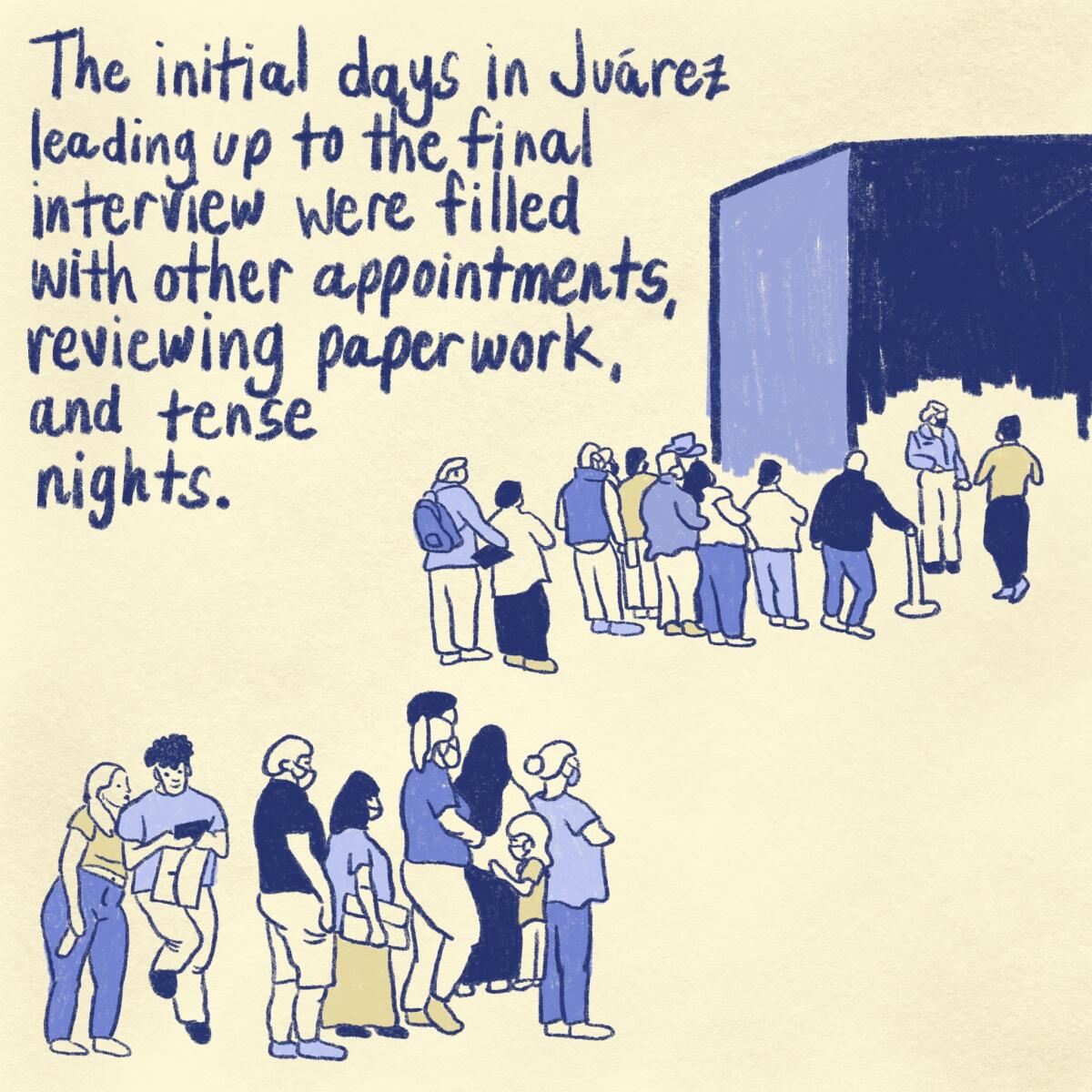
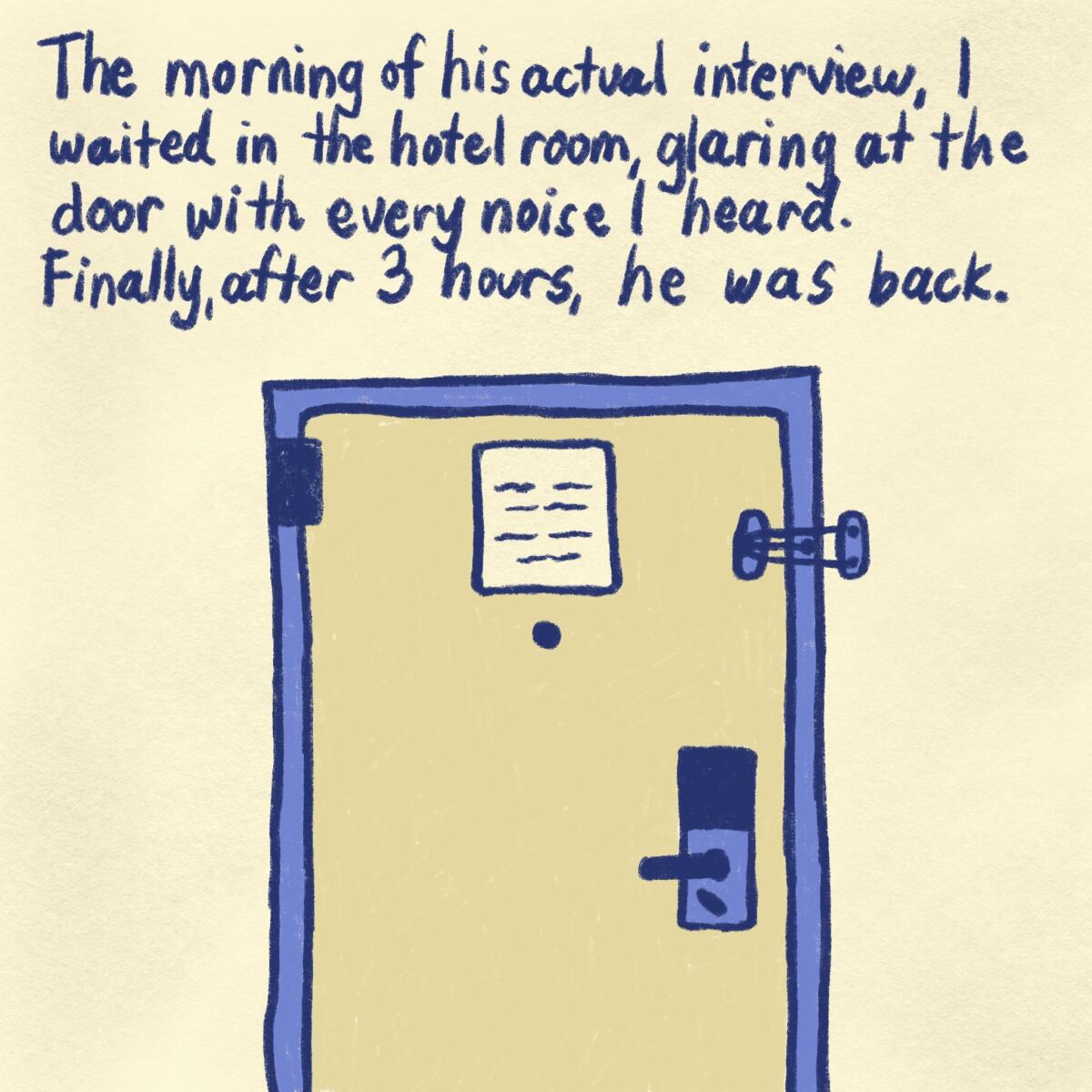
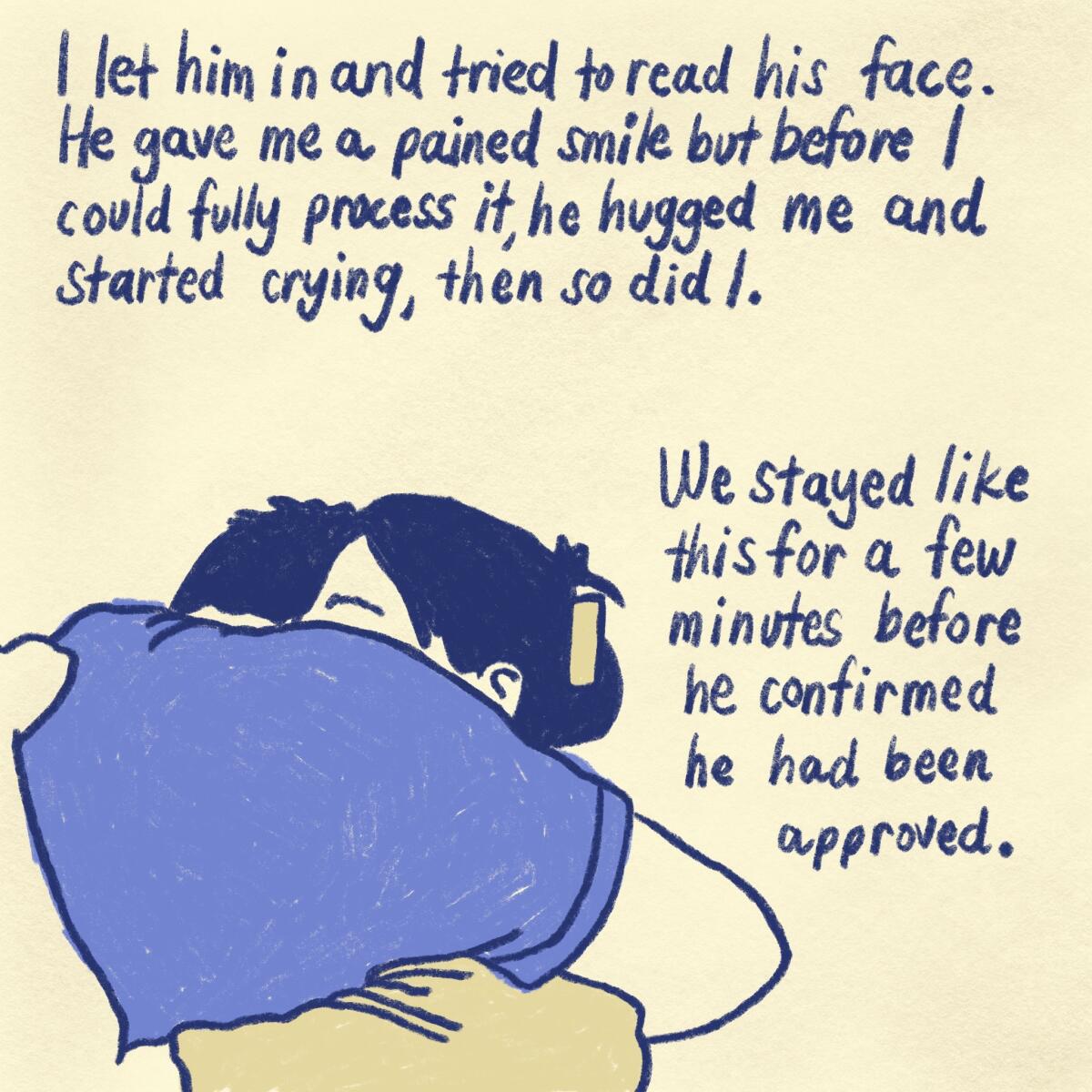

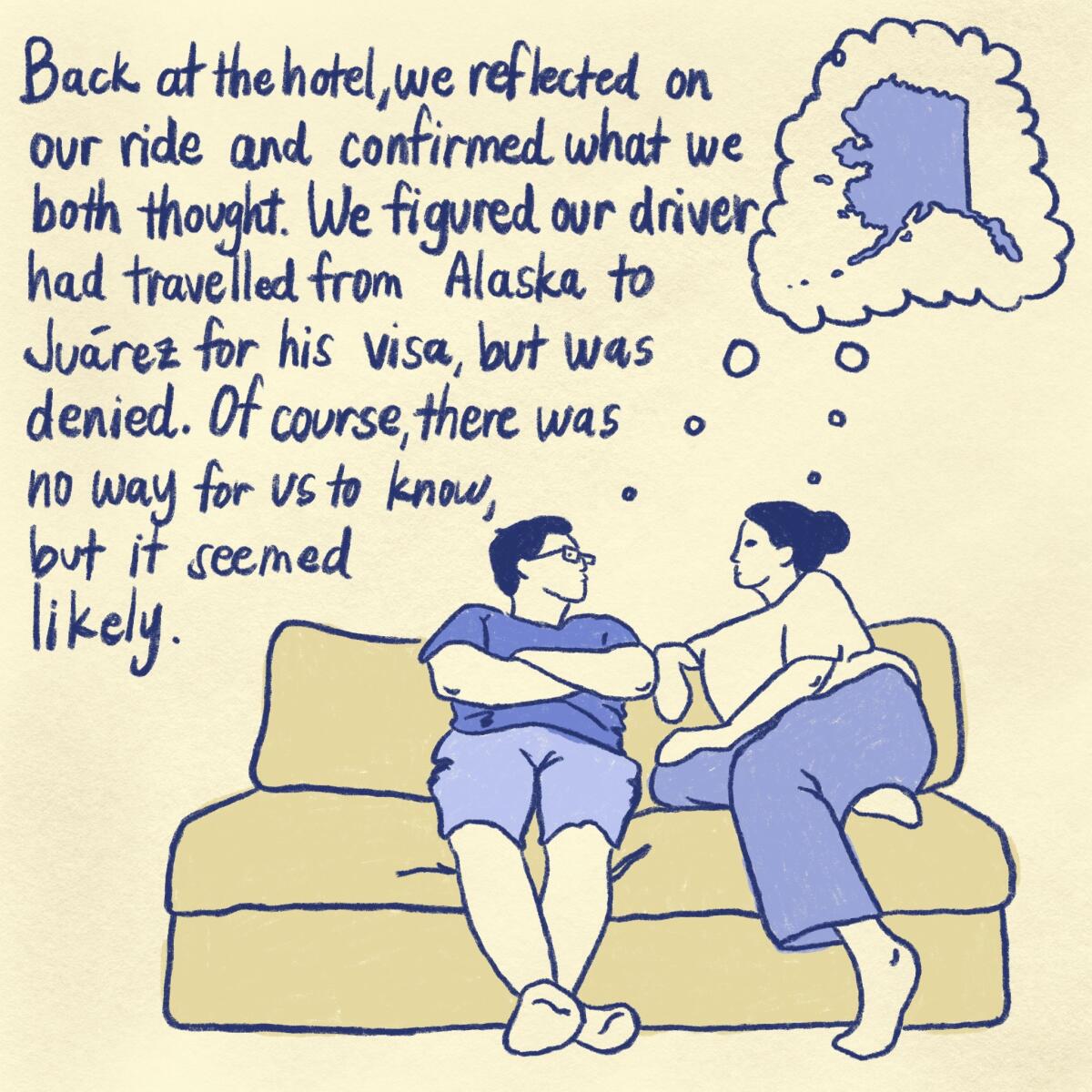


Marissa Elena is a Chicanx artist, podcaster, and Youtuber from the San Gabriel Valley of Los Angeles. They love to create colorful illustrations and comics about their daily life.
“I created this comic as a way to process the experience of my spouse and I going to Juárez for his visa interview. Seeing someone you love be subjected to what feels like a bureaucratic labyrinth of poking and prodding, knowing that the outcome can change their life forever (and yours by nature), is uniquely heart-wrenching. Especially when you know that it doesn’t have to, and shouldn’t, be this way. “
Are you a Latinx artist? We want your help telling our stories. Send us your pitches for illustrations, comics, GIFs and more! Email our art director at [email protected].
The Latinx experience chronicled
Get the Latinx Files newsletter for stories that capture the multitudes within our communities.
You may occasionally receive promotional content from the Los Angeles Times.




